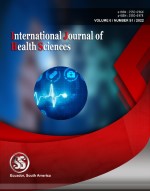Evaluating the knowledge, attitudes and practices among nursing staff and nursing students towards adverse drug reaction reporting at a public tertiary hospital and college, Islampur Sangli
Keywords:
adverse drug reaction reporting, India knowledge, medicine safety, nurse, pharmacovigilanceAbstract
Voluntary or spontaneous reporting of adverse drug reactions is a process of monitoring the safety of drugs post-marketing, providing a way to discover new, occasional or unseen adverse drug reactions. Even though its importance, there is overall underreporting of adverse drug reactions by nursing staff and nursing students in India. The study assessed the knowledge, attitudes and practices of nursing staff and nursing students on adverse drug reaction reporting at a tertiary public-sector hospital and college in Islampur, Sangli. A validated questionnaire based cross sectional study conducted among the nursing staff and nursing students in the tertiary public-sector hospital and college the data was then electronically captured on Microsoft excel spreadsheet & stata® (version 14) chi squared test was run in order to discover significant associations in the data 255 questionnaires sent out, 200 nursing staff & students responded to the questionnaire (78.43% response rate). The overall score on knowledge of ADR reporting was found to be average among nursing staff, nursing students half of the participants knew about reporting adverse drug reactions.85.71% nursing staff feels ADR reporting in the hospital should be mandatory.
Downloads
References
Agrawal, M., Singh, P., Hishikar, R., Joshi, U., Maheshwari, B. and Halwai, A., 2017. Adverse drug reactions at adverse drug reaction monitoring center in Raipur: Analysis of spontaneous reports during 1 year. Indian Journal of Pharmacology, 49(6), p.432.
Arulmani, R., Rajendran, S. and Suresh, B., 2008. Adverse drug reaction monitoring in a secondary care hospital in South India. British Journal of Clinical Pharmacology, 65(2), pp.210-216.
Bäckström, M., Mjörndal, T. and Dahlqvist, R., 2002. Spontaneous reporting of adverse drug reactions by nurses. Pharmacoepidemiology and Drug Safety, 11(8), pp.647-650.
Bigi, C. and Bocci, G., 2017. The key role of clinical and community health nurses in pharmacovigilance. European Journal of Clinical Pharmacology, 73(11), pp.1379-1387.
Goettler M, Schneeweiss S, Hasford J. Adverse drug reaction monitoring-cost and benefit considerations. Part II: Cost and preventability of adverse drug reactions leading to hospital admission. Pharmacoepidemiol Drug Saf 1997;6(Suppl 3):S79-90.
Hall, M., McCormack, P., Arthurs, N. and Feely, J., 1995. The spontaneous reporting of adverse drug reactions by nurses. British Journal of Clinical Pharmacology, 40(2), pp.173-175.
Journal of Pharmaceutical Sciences, 1973. International drug monitoring: The role of national centres. World Health Organization report series. World Health Organization, Geneva, Switzerland. (available from American Public Health Association, 1015 18th st., N.W., Washington, DC 20036), 1972 47 pp. 16 × 24CM. Price $1.00. 62(4), p.697.
K, L., A., L., Maria, J. and Pandit, A., 2017. Adverse drug reactions reporting among nursing staff and students: a validated questionnaire based knowledge, attitude and practice study. International Journal of Basic & Clinical Pharmacology, 6(3), p.523.
Kalaiselvan, V., Thota, P. and Singh, G., 2016. Pharmacovigilance Programme of India: Recent developments and future perspectives. Indian Journal of Pharmacology, 48(6), p.624.
Khan, S., Goyal, C., Chandel, N. and Rafi, M., 2013. Knowledge, attitudes, and practice of doctors to adverse drug reaction reporting in a teaching hospital in India: An observational study. Journal of Natural Science, Biology and Medicine, 4(1), p.191.
Mcbride, W., 1961. THALIDOMIDE AND CONGENITAL ABNORMALITIES. The Lancet, 278(7216), p.1358.
Miller, H., 1969. MT, 1933-48. The Musical Times, 110(1516), p.623.
Reactions Weekly, 2011. Pharmacovigilance India Summit aims to build reporting culture. &NA;(1357), p.3.
Survase, P., Date, A., Borkar, A., Badwaik, R., Siddiqui, R., Shende, T. and Dashputra, A., 2017. Knowledge, attitude and practice of adverse drug reactions reporting among nurses in a tertiary care centre. International Journal of Basic & Clinical Pharmacology, 6(12), p.2926.
Vural, F., 2015. The knowledge, attitude and behaviours of nurses about pharmacovigilance, adverse drug reaction and adverse event reporting in a state hospital. Northern Clinics of Istanbul, 1(3).
Wasserfallen, J., Livio, F., Buclin, T., Tillet, L., Yersin, B. and Biollaz, J., 2001. Rate, type, and cost of adverse drug reactions in emergency department admissions. European Journal of Internal Medicine, 12(5), pp.442-447.
Zaveri, J. and Chaudhari, A., 2019. Impact of educational training and workshop on knowledge, attitude, and practice of pharmacovigilance in nursing staff of tertiary care hospital, Rajasthan. National Journal of Physiology, Pharmacy and Pharmacology, (0), p.1.
Published
How to Cite
Issue
Section
Copyright (c) 2022 International journal of health sciences

This work is licensed under a Creative Commons Attribution-NonCommercial-NoDerivatives 4.0 International License.
Articles published in the International Journal of Health Sciences (IJHS) are available under Creative Commons Attribution Non-Commercial No Derivatives Licence (CC BY-NC-ND 4.0). Authors retain copyright in their work and grant IJHS right of first publication under CC BY-NC-ND 4.0. Users have the right to read, download, copy, distribute, print, search, or link to the full texts of articles in this journal, and to use them for any other lawful purpose.
Articles published in IJHS can be copied, communicated and shared in their published form for non-commercial purposes provided full attribution is given to the author and the journal. Authors are able to enter into separate, additional contractual arrangements for the non-exclusive distribution of the journal's published version of the work (e.g., post it to an institutional repository or publish it in a book), with an acknowledgment of its initial publication in this journal.
This copyright notice applies to articles published in IJHS volumes 4 onwards. Please read about the copyright notices for previous volumes under Journal History.
















